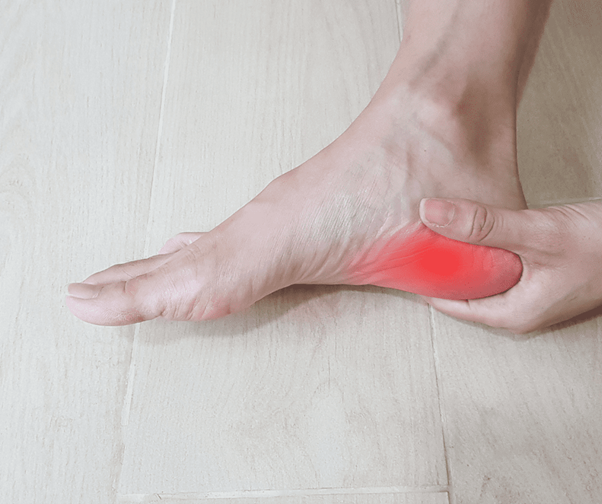Ever experienced a burning stabbing pain on the sole of your foot at your heel while walking or running? Then this may be for you.
This may be an injury called plantar fasciitis where the connective tissue on the bottom of your foot gets irritated.
Symptoms include a sharp, stabbing sensation at the heel of your foot especially during the first steps in the morning or long periods of staying on your feet.
It accounts for 4-7% of all injuries in general populations and 11-15% in foot injuries.
Causes: Plantar fasciitis is primarily caused by inflammation of the plantar fascia, a thick band of tissue that connects the heel bone to the toes. Common causes include overuse, improper footwear, high-impact activities, obesity, and certain foot arch conditions.
Symptoms: The hallmark symptom is heel pain, often described as a stabbing sensation, especially with the first steps in the morning. Pain may also increase after prolonged periods of standing or physical activity.
Management and Treatment:
Rest and Ice:
Rest: Allow your feet adequate time to rest, avoiding activities that exacerbate the pain.
Ice: Apply ice to the affected heel to reduce inflammation. Use a cold pack for about 15-20 minutes at a time.
Proper Footwear:
Choose shoes with good arch support and cushioning. Avoid high heels or shoes with inadequate support, as they can contribute to the strain on the plantar fascia.
Stretching Exercises:
Perform gentle stretching exercises for the Achilles tendon and plantar fascia. Regular stretching can help alleviate tension and promote flexibility.
Orthotic Inserts:
Consider using orthotic inserts or shoe insoles to provide additional support and cushioning to the feet.
Night Splints:
Night splints can be worn while sleeping to maintain the foot in a dorsiflexed position, preventing the plantar fascia from tightening overnight.
Physical Therapy:
A physical therapist can guide you through exercises to strengthen the muscles in your feet and calves, improving overall foot mechanics.
Prevention:
Maintain a Healthy Weight:
Excess weight can contribute to the development of plantar fasciitis. Maintain a healthy weight through a balanced diet and regular exercise.
Gradual Changes in Activity:
Avoid sudden increases in physical activity. Gradually introduce changes to your exercise routine to prevent overuse injuries.
Proper Warm-up:
Always warm up before engaging in physical activities to prepare the muscles and tendons for the stress of exercise.
Conclusion:
Plantar fasciitis can be a challenging condition, but with a proactive approach to management and prevention, individuals can often find relief and maintain an active lifestyle. If symptoms persist, it’s crucial to consult with a healthcare professional for a thorough evaluation and personalised treatment plan. By incorporating these strategies into your daily routine, you can take steps toward reducing pain and promoting overall foot health.


